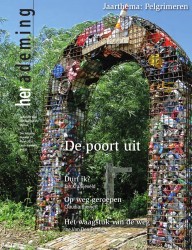
Reedijk 2016
“Verlost van alle kwaad – Jeroen Bosch’ hoop op de goede afloop” (Wim Reedijk) 2016
[in: Herademing – Tijdschrift voor Spiritualiteit en Mystiek, vol. 24, no. 91 (March 2016), pp. 42-46]
In the art of Bosch evil appears in two shapes: people who cause harm to each other and evil (sin) within every particular person. According to the Bible sin has caused death, which is inevitable. The Haywain triptych offers a clear example of these ideas.
But Bosch’s paintings also bring a message of hope and offer a more optimistic view about the future of mankind than some authors have suggested. Christ’s gesture in the upper region of the Haywain does not express despair but compassion: Christ is showing His wounds in order to remind man of the fact that he can always abstain from sin and opt for eternal life. For until the very end Christ is prepared to forgive every sinner. The pedlar figure in the exterior panels and the similar protagonist of the Rotterdam tondo represent man who is repentant at the end of his life. Bosch’s Christian message has got two aspects: sin is lurking all around us but thanks to Christ man can always hope for salvation.
This article closely follows De Bruyn 2001a and De Bruyn 2001b.
[explicit 22nd August 2016]